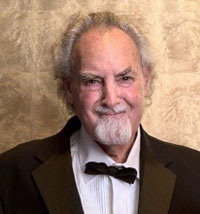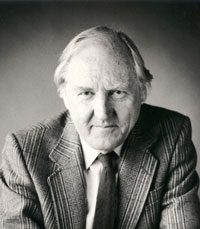Five Academy Fellows have been recognised in the 2020 Queen’s Birthday honours, receiving the Order of Australia for their outstanding service or exceptional achievements.
Three are among those named as Officers in the General Division of the Order of Australia:
Emeritus Professor Perry Bartlett AO FAA is recognised for distinguished service to neuroscience research, and to people living with dementia, motor neurone disease and spinal cord injury.
Professor Marcello Costa AO FAA is recognised for distinguished service to higher education and to medical research, in the field of neurophysiology and to professional scientific bodies.
Dr Cathy Foley AO PSM FAA FTSE is recognised for distinguished service to research science, to the advancement of women in physics and to professional scientific organisations. Dr Foley was elected a Fellow of the Academy this year.
Two Academy Fellows have been named Members of the Order of Australia:
Emeritus Professor Robert Baxter AM FAA is recognised for significant service to medical research, to endocrinology and to tertiary education.
Professor Andrew Roberts AM FAA FAHMS is recognised for significant service to medical research, to haematology and to cancer organisations. Professor Roberts was also elected a Fellow of the Academy this year.

10 May 1929 to 3 June 2020
Professor Geoffrey Burnstock was elected to the Academy in 1971 for his work in the field of the cellular and comparative physiology of smooth muscle. He developed the ‘sucrose gap technique’ for electrophysiological recording from smooth muscle. This became the foremost tool for studies of the effects of drugs and ions at the membrane level. His lasting work with ATP-related signalling was first published in the 1970s, which led to a rapid surge in interest in the field and subsequently made him the most cited scientist in pharmacology and toxicology for several years during the 2000s. Much of our understanding of purinergic signalling and the current classification of purinergic receptors is attributed to his research.
Professor Burnstock was born in London and completed his BSc and PhD at the University of London. He went on to work at the National Institute for Medical Research. After developing the ‘sucrose gap technique’ he took up a position in the Department of Pharmacology at Oxford University. After spending a year at the University of Illinois on a Rockefeller Travelling Fellowship, in 1959 he decided to move to Australia. He worked at the University of Melbourne until 1975, starting as senior lecturer and working his way up to Professor and Chair of the Department. He returned to University College London as Head of the Department of Anatomy and Developmental Biology. After stepping down as Department Head, Professor Burnstock continued as Emeritus Professor at UCL, before returning to Melbourne in 2017.
In 1970 Professor Burnstock was awarded the Royal Society of Victoria’s Research Medal. He was elected a Fellow of the Royal Society in 1986 and was awarded its Royal Medal in 2000. In 1999 he was made an Honorary Fellow of both the Royal College of Pathologists and the Royal College of Surgeons. In 2000 he was awarded the Janssen Award for Gastroenterology and the Royal Society of Victoria’s Silver Medal. In 2003 he was made Correspondant Academicien of the Real Academia Nacional de Farmacia of Spain. In 2009 the British Neuroscience Association awarded him its Outstanding Contribution Award, and the University of Ferrara awarded him its Copernicus Gold Medal. In 2018 he received the Academy’s Macfarlane Burnet Medal.
Professor Burnstock served on the Academy’s Scientific Research Policy committee from 1972 to 1975 before moving to the UK. Professor Burnstock was interviewed in 2008 by Professor Robyn Williams AO FAA; read the interview transcript.

7 March 1925 to 4 June 2020
Professor Mervyn Paterson was elected to the Academy in 1972 for his work on experimental geology and the deformation mechanisms of rocks and minerals, and for his pioneering instrumentation design. He pioneered the experimental study of the genesis of geological structures by using rocks themselves rather than model materials.
Professor Paterson was born in South Australia and attended the University of Adelaide from the age of 16. He then worked at the (then) CSIR Division of Aeronautics on the physics of metal fatigue. He completed his PhD on X-ray diffraction effects of deformation metals at the University of Cambridge, then moved to Chicago for postdoctoral studies.
He returned to Australia to work at CSIRO, but soon moved to the Department of Geophysics in the Research School of Physical Sciences at the Australian National University. He remained at the ANU for 31 years and while there he developed instruments to test rock deformation. Following retirement, he continued instrument building as owner and manager of Paterson Instruments Pty Ltd, and later in association with Australian Scientific Instruments Pty Ltd.
Professor Paterson was a Fellow of the Geological Society of Australia and the Mineralogical Society of America. He became a Fellow of the American Geophysical Union in 1986 and was awarded its Bucher Medal in 2004. In 2003 he was awarded the Centenary Medal.
Professor Paterson served on many Academy committees for close to 40 years and on the National Committee for Crystallography.
Professor Paterson was interviewed in 2006 by Professor Kurt Lambeck AO FAA FRS; read the interview transcript.
© 2025 Australian Academy of Science